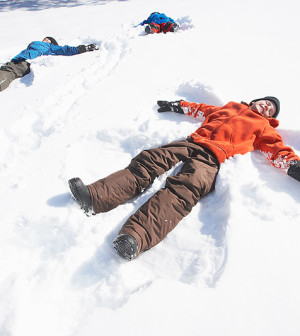- Skip Storing This Everyday Product in the Fridge Door
- Green Tea + B3 Pairing May Boost Brain Health
- Navigating Your Midlife Crisis: Embracing New Possibilities
- City Raccoons Showing Signs of Domestication
- Mapping the Exposome: Science Broadens Focus to Environmental Disease Triggers
- One Week Less on Social Media Linked to Better Mental Health
- Your Brain Changes in Stages as You Age, Study Finds
- Some Suicide Victims Show No Typical Warning Signs, Study Finds
- ByHeart Formula Faces Lawsuits After Babies Sickened With Botulism
- Switch to Vegan Diet Could Cut Your Greenhouse Gas Emissions in Half
Secondhand Smoke in Infancy May Harm Kids’ Teeth

WEDNESDAY, Oct. 21, 2015Want your baby to grow into a tot with a cavity-free smile? Don’t smoke when he or she is around.
Children exposed to secondhand smoke at 4 months of age may be at risk for tooth decay by age 3, Japanese researchers report.
Those children were roughly twice as likely to have cavities as kids whose parents didn’t smoke. A mother’s tobacco use during pregnancy was not a factor, the researchers added.
“Secondhand smoke is one of the major public health problems still unsolved,” said lead researcher Dr. Koji Kawakami, chairman of pharmacoepidemiology and clinical research management at Kyoto University.
Exposure to secondhand smoke is widespread, affecting four out of 10 kids around the world, he said.
“In our study, more than half of children had family members who smoked, and most smokers were their fathers,” Kawakami said.
He emphasized that this study only shows an association between exposure to secondhand smoke and cavities, however, not that smoking exposure causes tooth decay.
Even so, the findings support increased efforts to reduce secondhand smoke, he said.
“For example, education on the harm of secondhand smoke would increase if dentists become aware of the cavities risk due to secondhand smoke as well as tobacco smoking of their patients,” Kawakami said.
The report was published Oct. 21 in BMJ.
Dr. Jonathan Shenkin, a clinical associate professor of health policy, health services research and pediatric dentistry at Boston University who is a spokesman for the American Dental Association, said evidence of a link between exposure to secondhand smoke and increased risk of tooth decay has mounted over the past decade.
“Like the population in this study, exposure to secondhand smoke continues to be a problem in the U.S., suggesting value in additional research,” he said.
For this study, researchers collected data on nearly 77,000 children born between 2004 and 2010. The children were examined at birth, 4, 9 and 18 months of age and at 3 years of age.
In addition, their mothers completed questionnaires about smoking in the home, along with their child’s exposure to secondhand smoke, their dietary habits and dental care.
About 55 percent of the parents smoked and almost 7 percent of the children were exposed to secondhand smoke, the researchers found.
In all, nearly 13,000 cases of cavities were identified.
Dr. Rosie Roldan, director of the pediatric dental center at Nicklaus Children’s Hospital in Miami, said that tobacco smoke may change the saliva and other biochemistry needed to clean and protect teeth.
“Secondhand smoke puts children at risk for heart disease, breathing difficulties, and possibly for cavities,” she said.
More information
Learn more about secondhand smoke from the U.S. Centers for Disease Control and Prevention.
Source: HealthDay
Copyright © 2025 HealthDay. All rights reserved.










